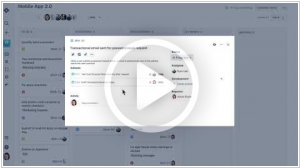Jira vs Microsoft Project
August 10, 2023 | Author: Michael Stromann
73

JIRA provides issue tracking and project tracking for software development teams to improve code quality and the speed of development. Combining a clean, fast interface for capturing and organising issues with customisable workflows, OpenSocial dashboards and a pluggable integration framework, JIRA is the perfect fit at the centre of your development team.
25
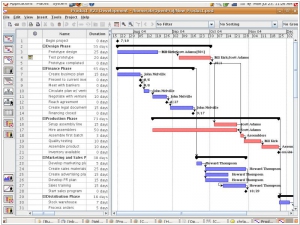
Microsoft Project is a project management software program developed and sold by Microsoft which is designed to assist project managers in developing plans, assigning resources to tasks, tracking progress, managing budgets and analyzing workloads. The application creates critical path schedules, and critical chain and event chain methodology third-party add-ons are also available. Schedules can be resource leveled, and chains are visualized in a Gantt chart.
JIRA and Microsoft Project are two popular project management tools that offer different approaches and features to assist in managing projects. JIRA, developed by Atlassian, is a powerful software that specializes in agile project management, particularly for software development teams. It provides robust features for issue tracking, task management, and sprint planning, making it well-suited for teams practicing agile methodologies. JIRA also offers integrations with other Atlassian tools, such as Confluence for documentation and Bitbucket for version control. On the other hand, Microsoft Project is a comprehensive project management software that provides features for planning, scheduling, resource management, and budgeting. It offers a variety of project views, including Gantt charts, and allows for detailed task and resource tracking. Microsoft Project is suitable for a wide range of industries and project types, and it integrates well with other Microsoft tools, such as Excel and SharePoint.
See also: Top 10 Issue Trackers
See also: Top 10 Issue Trackers
Jira vs Microsoft Project in our news:
2023. Atlassian brings an AI assistant to Jira and Confluence
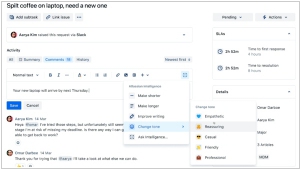
Atlassian has introduced Atlassian Intelligence, an AI-powered 'virtual teammate' that utilizes the company's proprietary models and OpenAI's large language models to create customized teamwork graphs. This technology enables various functionalities, such as AI-generated summaries in Confluence and test plans in Jira Software, as well as the rewriting of responses to customers in Jira Service Management. Atlassian Intelligence provides users with a chatbox similar to Chat-GPT, which is deeply integrated into different products and allows for the referencing of specific documents. For instance, to generate a summary of action items from a recent meeting, users can link the document with the transcript and request the summary inside Confluence. The tool then generates a list of decisions and action items from the meeting.
2022. Atlassian acquires Percept.AI
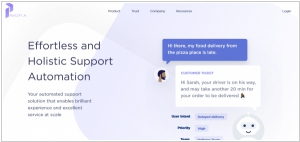
Atlassian has recently completed the acquisition of Percept.AI, an artificial intelligence (AI) company known for its automated virtual agent support solution—a chatbot that utilizes a proprietary AI engine for natural language understanding. The intention behind this acquisition is to integrate the advanced virtual agent technology into Jira Service Management, Atlassian's IT service management tool aimed at improving service delivery for both employees and customers. Percept.AI's platform, driven by data-driven proprietary technology, possesses the remarkable capability to continuously learn from customer interactions, while ensuring that every member of your team maintains full control over the AI agent's behavior and voice. This strategic move by Atlassian aims to enhance their service management offerings by leveraging AI-powered virtual agent capabilities.
2021. Atlassian launches Jira Work Management for every team
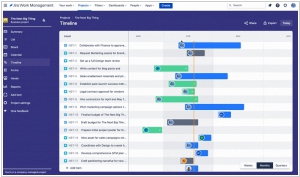
Atlassian has made an announcement regarding the introduction of a new edition of its project management tool, Jira, called Jira Work Management. The company has been actively expanding Jira's reach beyond its origins in software development teams. While Jira Service Management has successfully catered to IT teams, Jira Core has also made progress in this direction. However, Jira Work Management takes this a step further and is positioned to replace Jira Core. The objective behind Jira Work Management is to provide a version of Jira that empowers teams in various domains such as marketing, HR, finance, design, and more to efficiently manage their work. Moreover, if required, these teams can seamlessly connect their work with that of a company's development teams.
2020. Atlassian acquires asset management company Mindville

Atlassian has made an announcement regarding its recent acquisition of Mindville, an enterprise asset management provider focused on Jira. This acquisition marks Atlassian's entry into a new market segment, as it adds asset management tools to its existing suite of services. Mindville Insights, the flagship product of Mindville, enables tracking of assets across various departments such as IT, HR, sales, legal, and facilities within a company. While the platform is asset-agnostic, it is expected that many companies within Atlassian's user base will utilize it primarily for tracking IT assets such as servers and laptops. In addition to physical assets, the service also supports automatic importing of cloud-based servers from providers like AWS, Azure, and GCP. The Mindville team has developed connectors to integrate with popular services like ServiceNow and Snow Software. Notable customers of Mindville include NASA, Spotify, and Samsung, among others.
2019. Microsoft Project becomes user-friendly
Microsoft Project may be renowned as the most famous and legendary project management software, but it can hardly be described as simple and user-friendly, especially when compared to many of the new cloud services available, such as Asana, Basecamp, Trello, or Wrike. Recognizing this, Microsoft has undertaken a massive redesign of the system. As you can observe in the presentation video, the focus is on simplicity, aiming for a user experience so intuitive that even a child could navigate it. However, the developers have also successfully incorporated several new features, including a kanban board, resource management, budget analysis, and time and expense tracking. Furthermore, Microsoft Project is now available as a subscription service, with a cost of $10 per month per user.
2018. Jira Cloud gets Trello-inspired redesign
Earlier this year, Atlassian introduced the latest iteration of its hosted project tracking tool, Jira Software. This release signifies a significant division between the hosted version of Jira, hosted on AWS, and the self-hosted server version, with Atlassian now focusing on distinct features for each. The new version of Jira boasts a fresh, Trello-inspired interface and introduces enhanced functionality that empowers teams with a more flexible workflow, reducing reliance on administrators and granting greater autonomy. One notable feature that Atlassian takes pride in is roadmaps, which enables teams to gain a comprehensive view of their projects. Similar to boards, modifying the roadmap is effortless as it simply involves dragging and reassigning larger work segments, referred to as "epics" in Agile terminology, to different dates.
2018. Atlassian launches Jira Ops for managing incidents
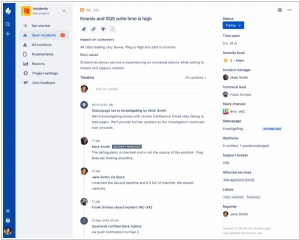
Atlassian has introduced a new edition of its flagship product, Jira, designed to enhance the efficiency and speed at which operations teams handle incidents. Jira Ops seamlessly integrates with various tools including OpsGenie, PagerDuty, xMatters, Statuspage, Slack, and others. While many teams already utilize these tools during service disruptions, Atlassian highlights the prevalent ad hoc approach employed by most companies in managing incidents. Jira Ops aims to serve as the cohesive element that ensures alignment and offers comprehensive visibility into ongoing incidents. With Jira Ops, when an incident occurs, users have a centralized location where they can access all relevant information. This includes details on who has been notified and alerted, the ability to notify additional individuals directly from the platform, and knowledge of the Slack channel dedicated to discussing the incident. Additionally, Atlassian has acquired OpsGenie for $295 million, further strengthening its incident management capabilities.
2016. JIRA gets Upwork integration
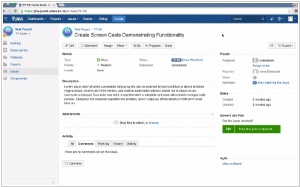
The project management service JIRA is introducing a new functionality that enables users to seamlessly convert JIRA tickets into job postings on the Upwork freelance marketplace. This integration allows JIRA users to simply click a button and access a pre-filled form to submit directly to Upwork's marketplace. This feature is particularly beneficial for small businesses that frequently face a backlog of feature requests and unresolved bug fixes. It is worth noting that this collaboration between Atlassian and Upwork is not the first time they have partnered in relation to JIRA. Upwork clients already have the ability to link their JIRA tickets to their Upwork account, enabling freelancers to track their time. Furthermore, clients can utilize Upwork's messaging feature to receive updates when a freelancer commits code to Bitbucket or updates a JIRA ticket, for instance.
2016. Microsoft unveiles Project Server 2016, inpired by Cloud
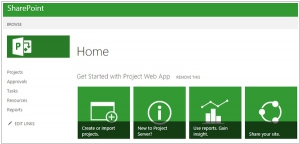
Microsoft has made an announcement regarding the general availability of Project Server 2016, a solution that brings significant project and portfolio management (PPM) benefits to our on-premises customers. According to Microsoft, Project Server is engineered to perform and scale just like their cloud service, as it is built using the same underlying code. In terms of functionality, the release of Project Server 2016 shares many similarities with its 2013 predecessor. However, it introduces enhancements in resource management, such as the inclusion of resource engagements with heat map displays, and improves the transparency between project planning and line planning. Additionally, the Resource Plan feature has been removed from the Project Web App interface, as it is now integrated into Microsoft Project 2016. Microsoft has also introduced a content pack for Power BI Dashboards, which seamlessly integrates with their cloud-based Project Online offering.
2014. Atlassian launches JIRA and Confluence for large companies
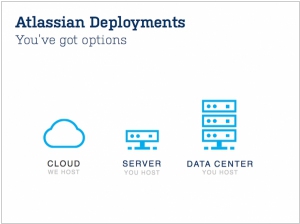
Atlassian has unveiled two new products designed specifically for large enterprises. In the upcoming week, Atlassian will release JIRA Data Center, a version of its project management software that supports running the service on multiple nodes. Additionally, later this summer, it will introduce Confluence Data Center, a collaboration service centered around wikis. With the Data Center versions, larger companies will enjoy improved support for scaling the services across multiple nodes, resulting in enhanced performance and scalability. Administrators will have the ability to route specific applications, teams, or geographies to designated nodes within a cluster, while additional nodes can be added in real time. The clustering technology and shared file systems are seamlessly integrated with industry-standard technologies, ensuring smooth operations.


